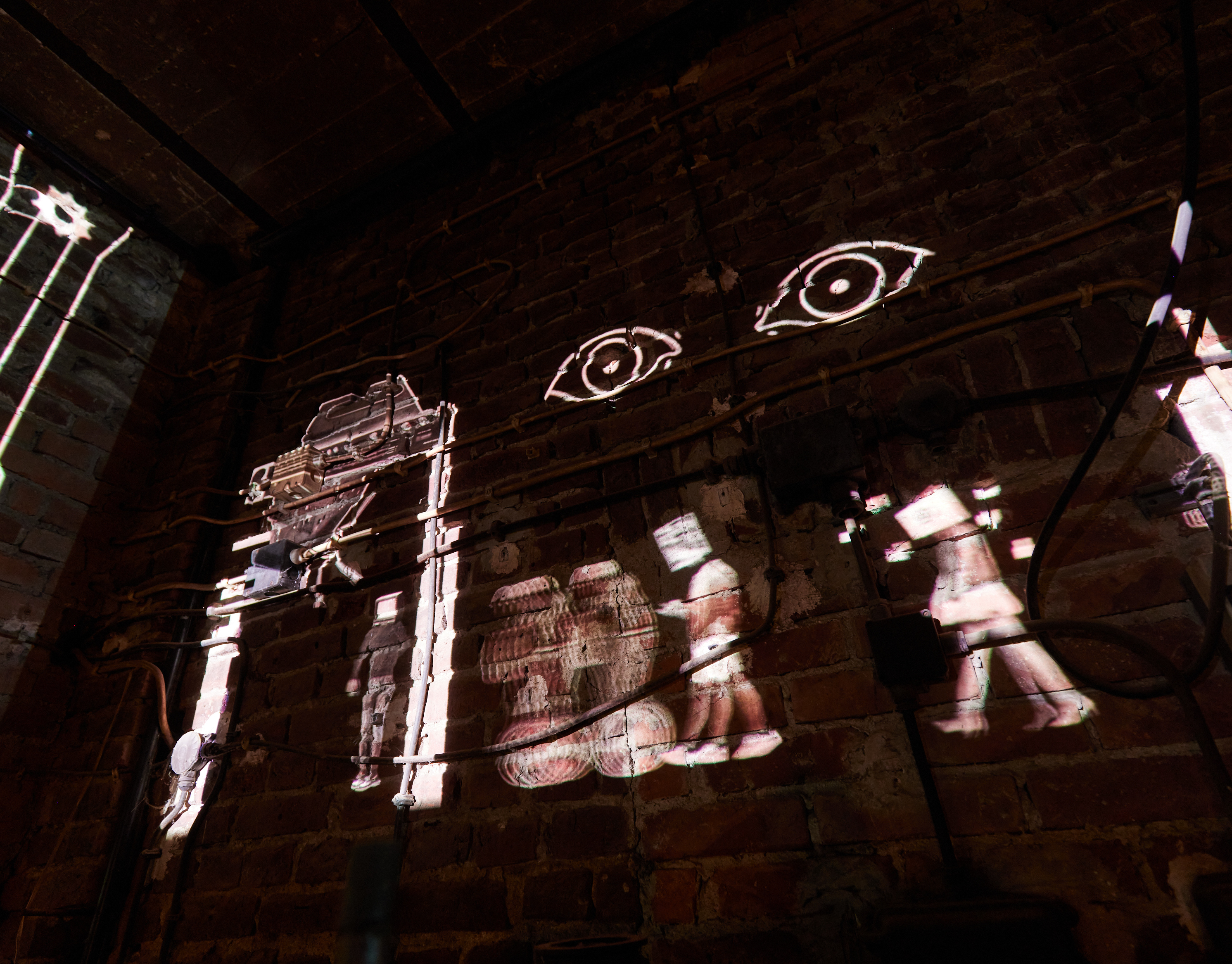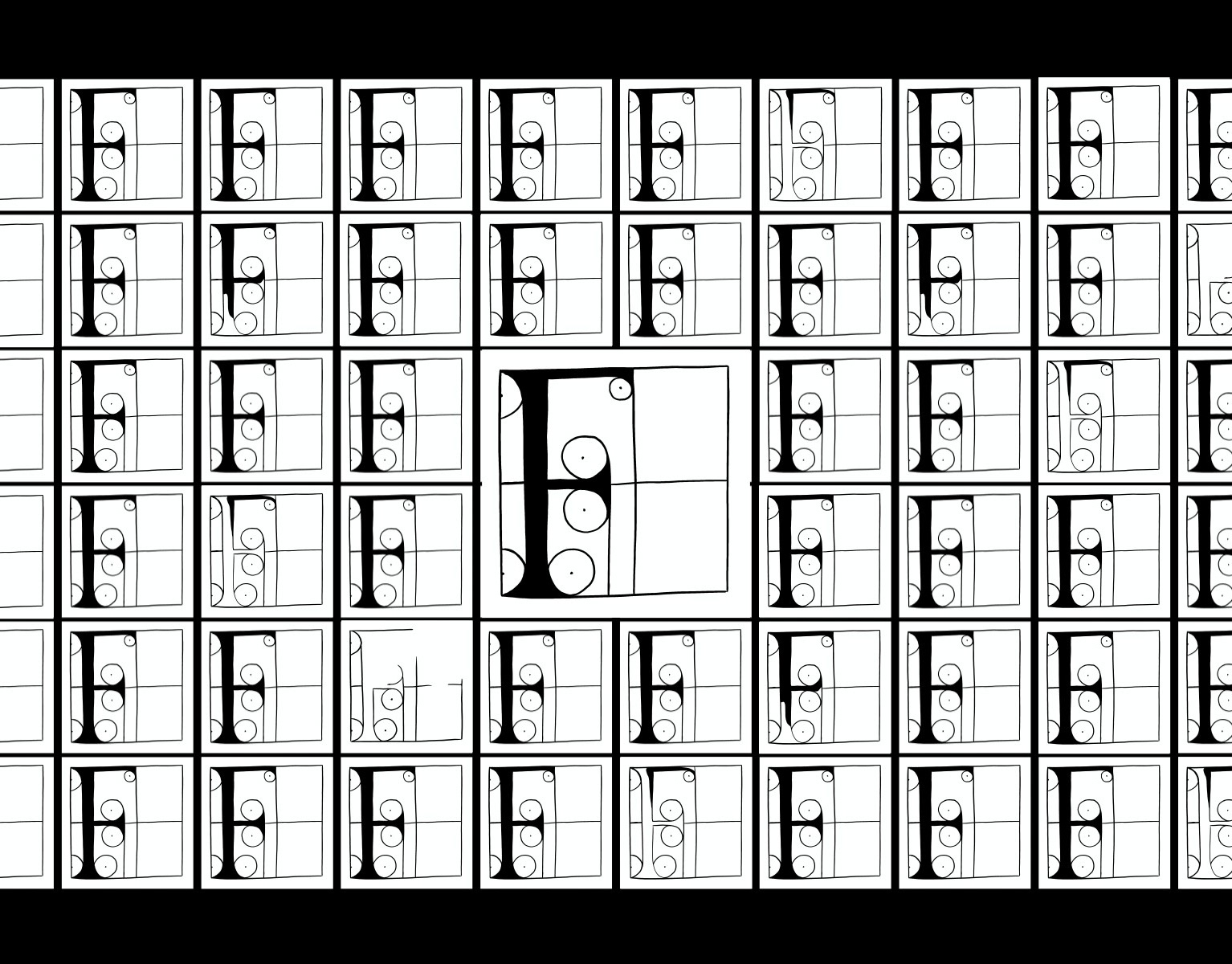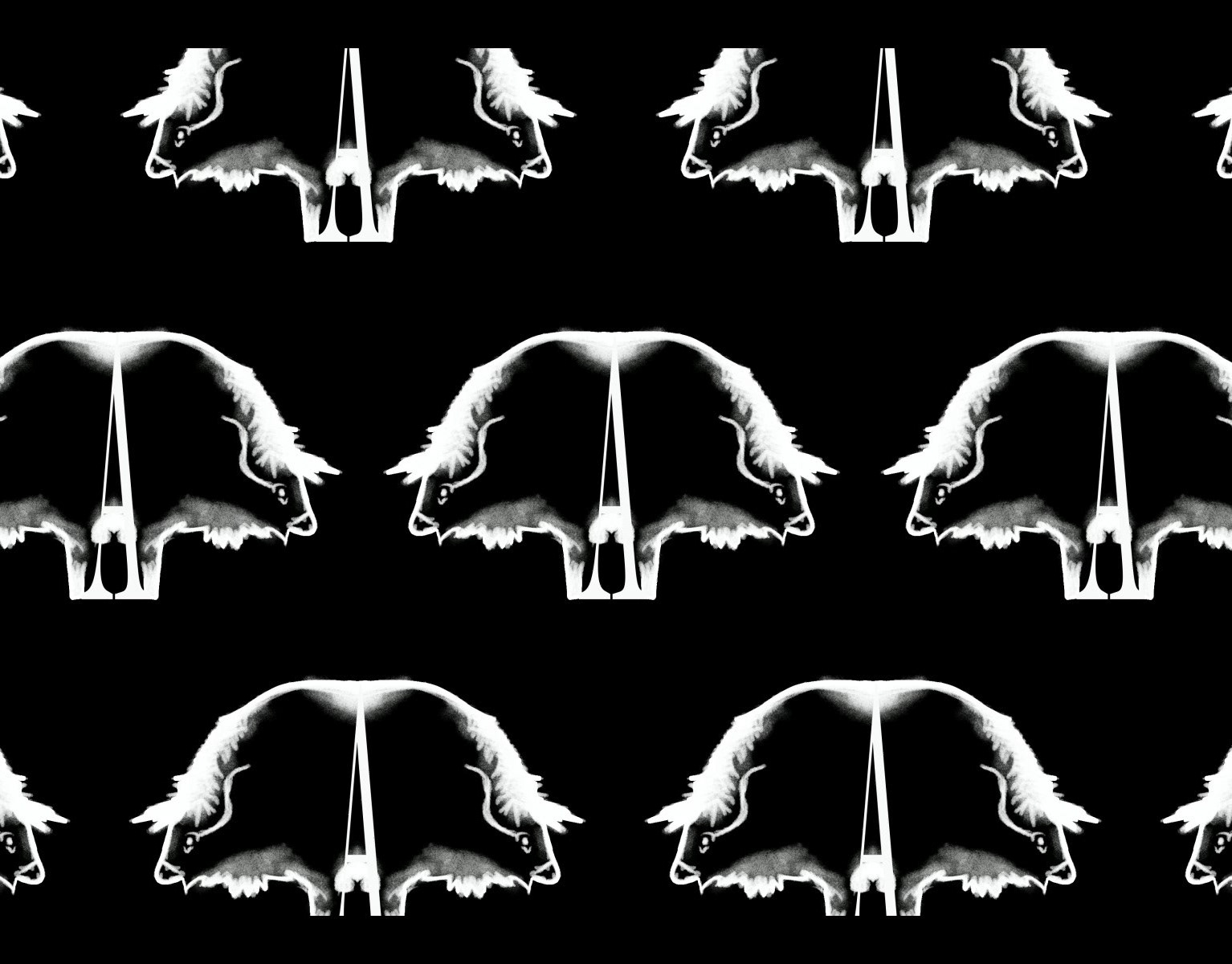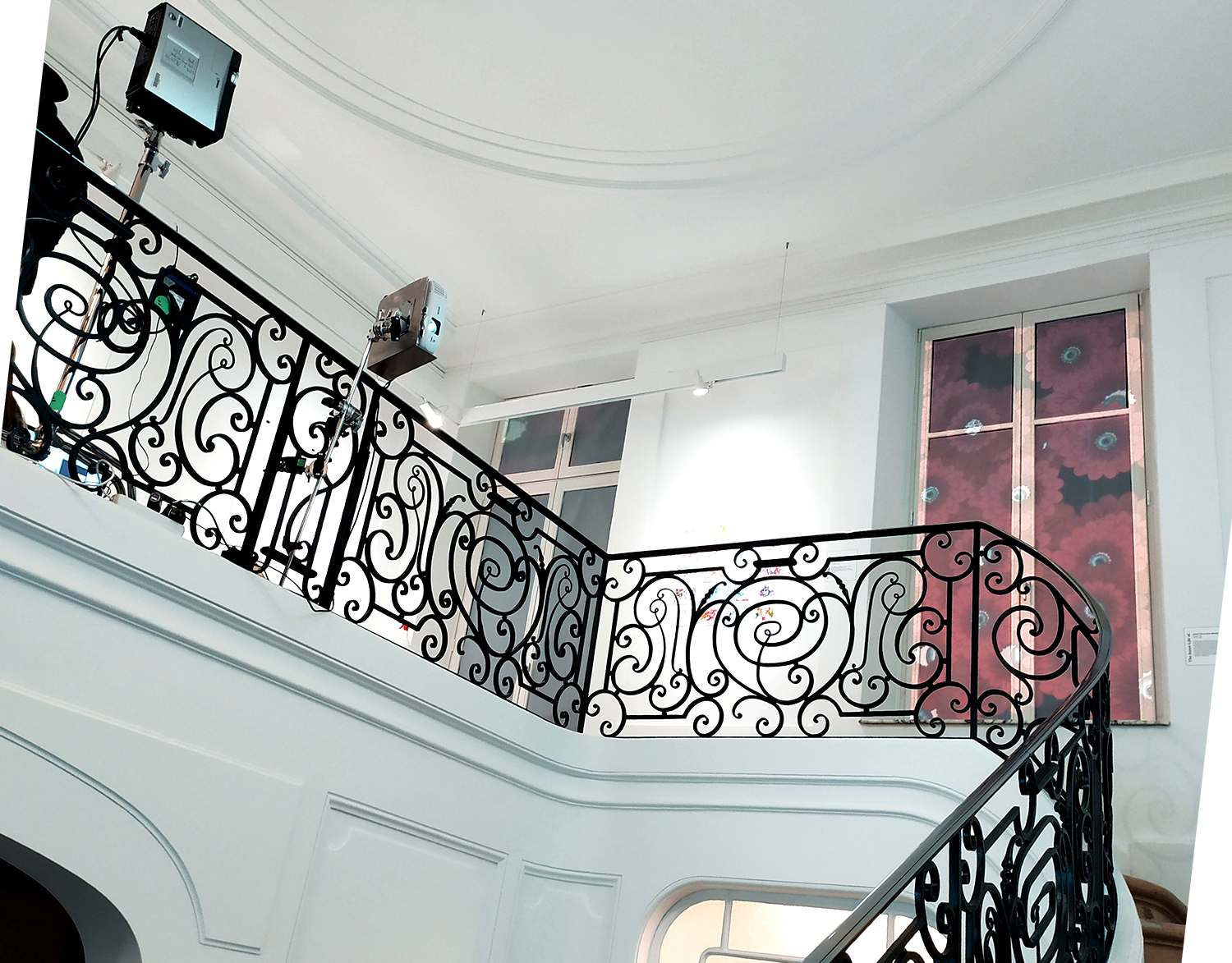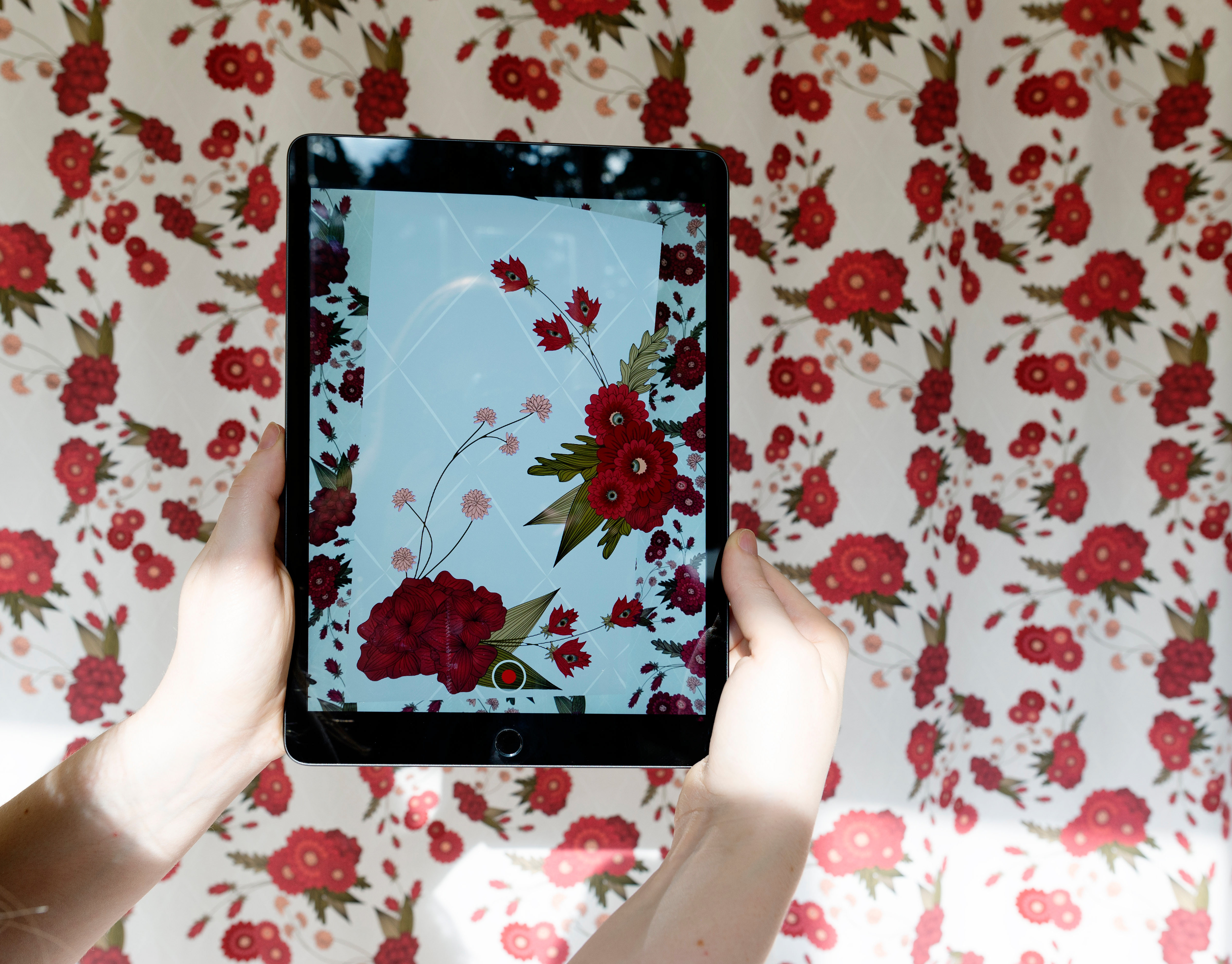Synaesthesia
Masterproject 2024
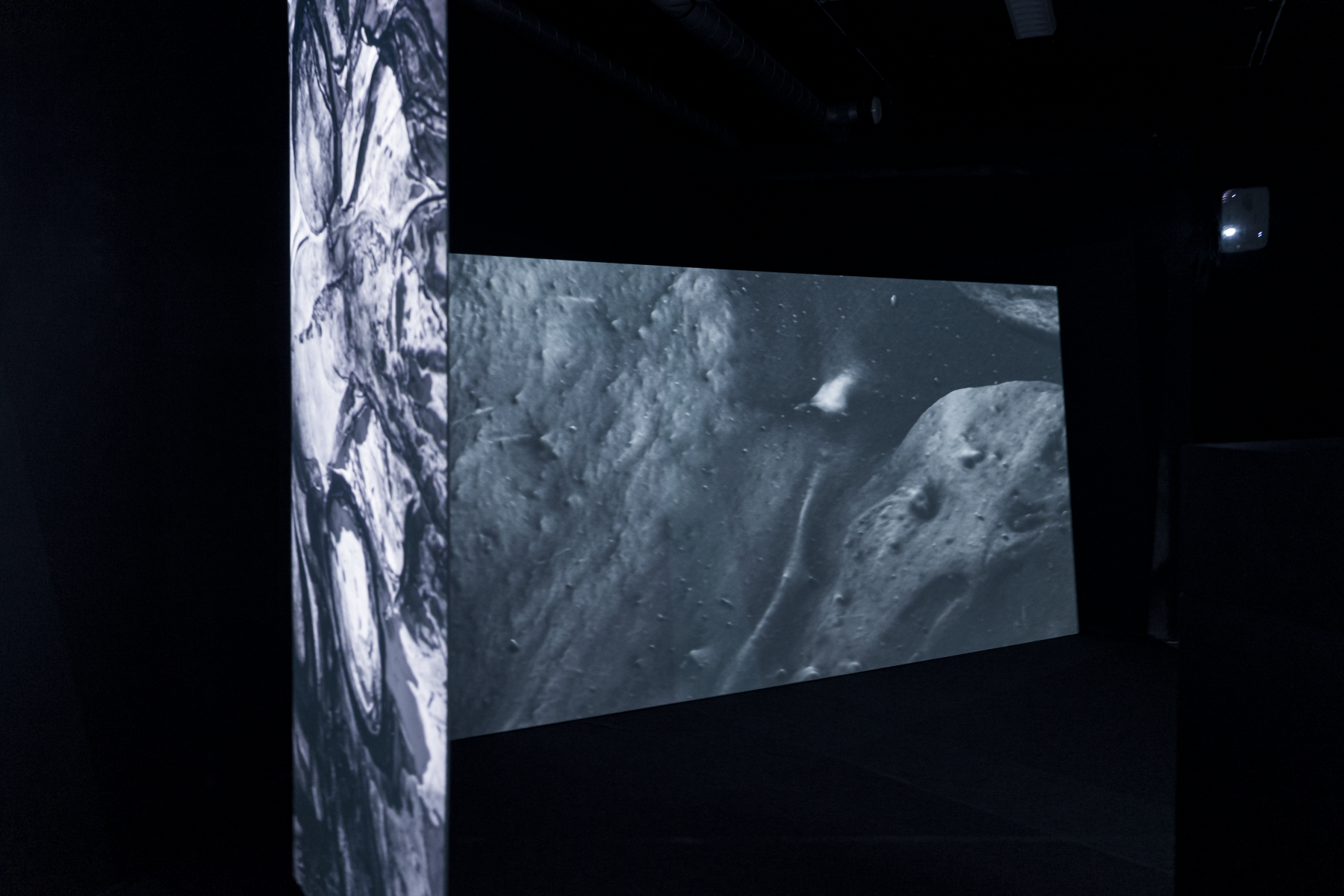
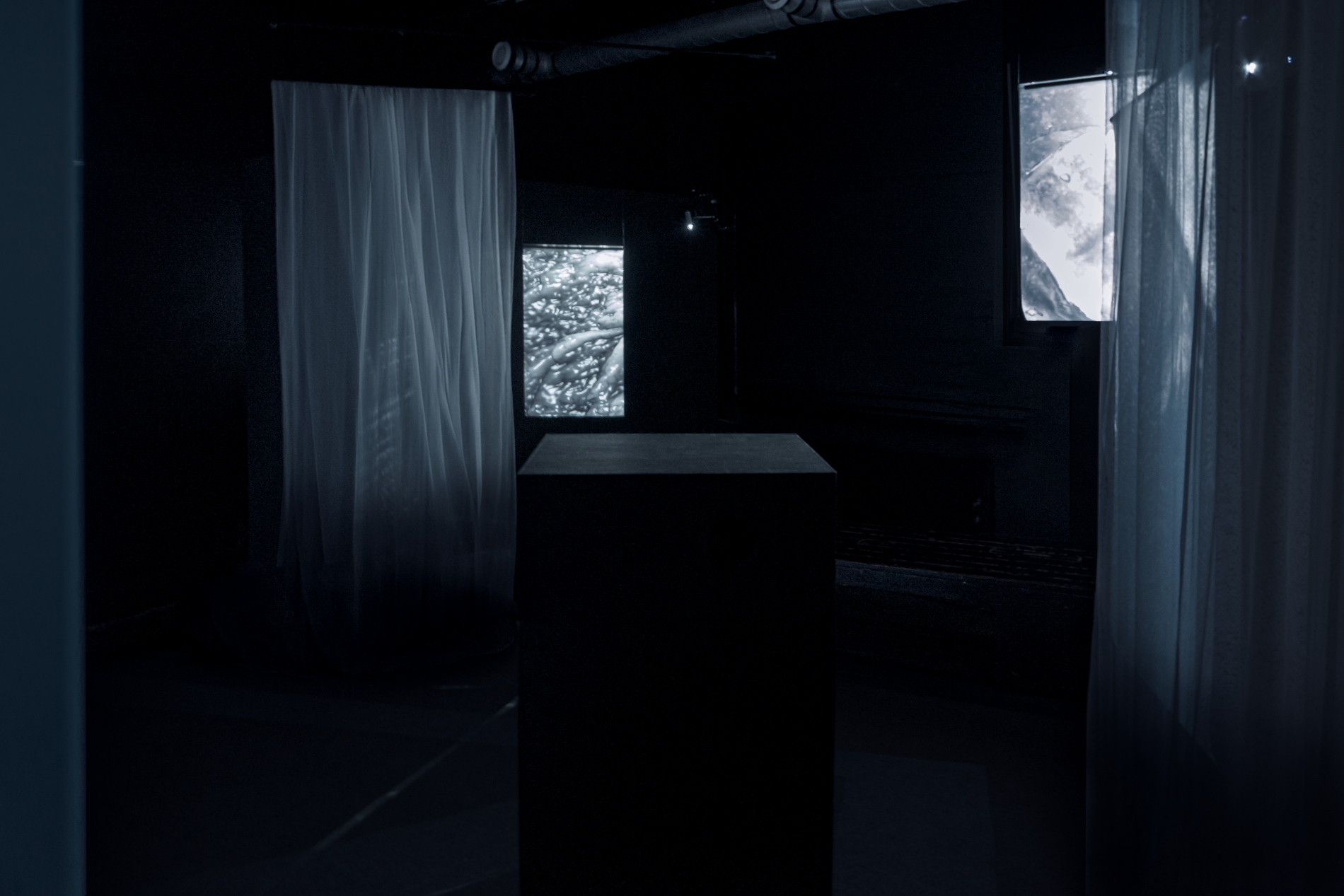
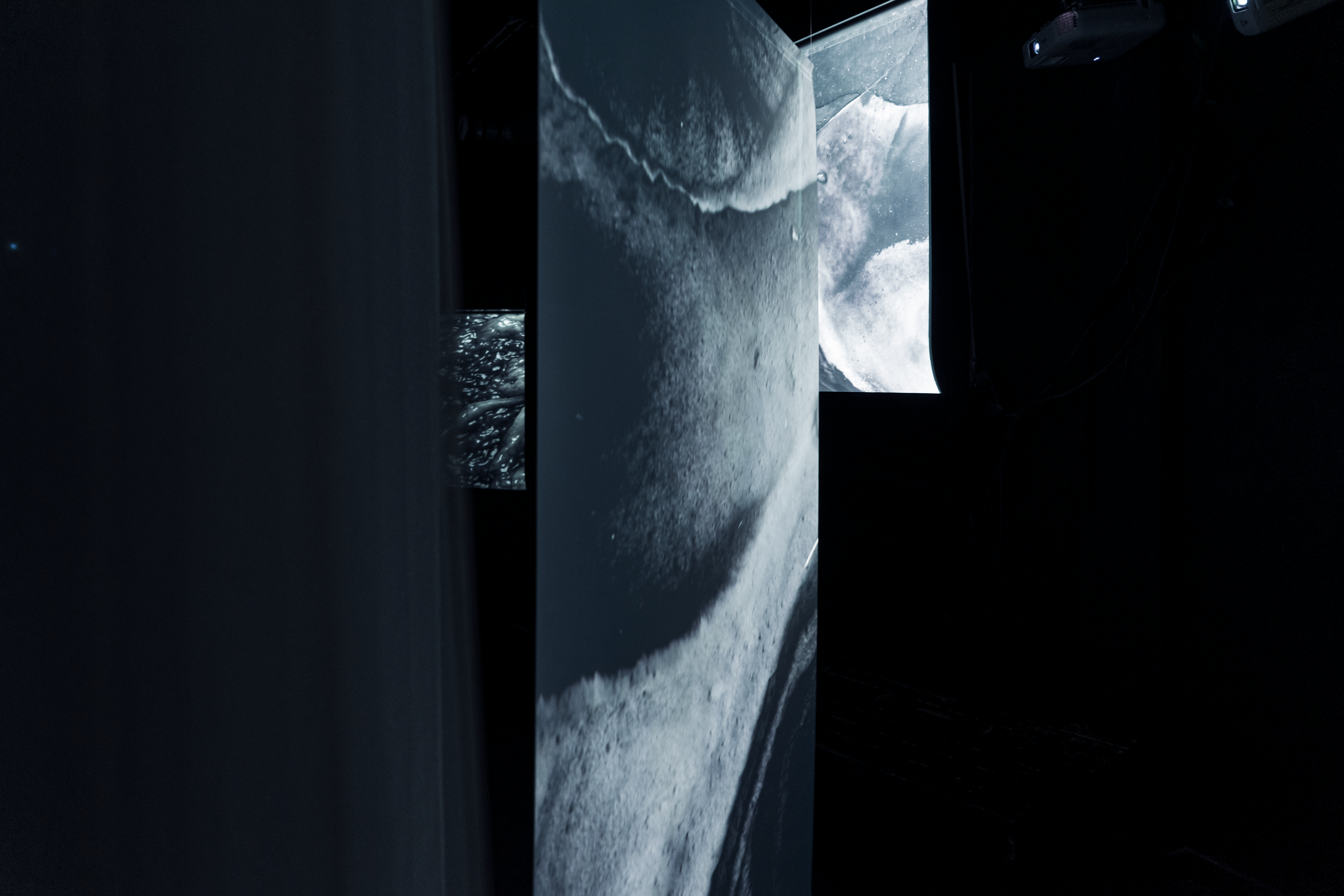
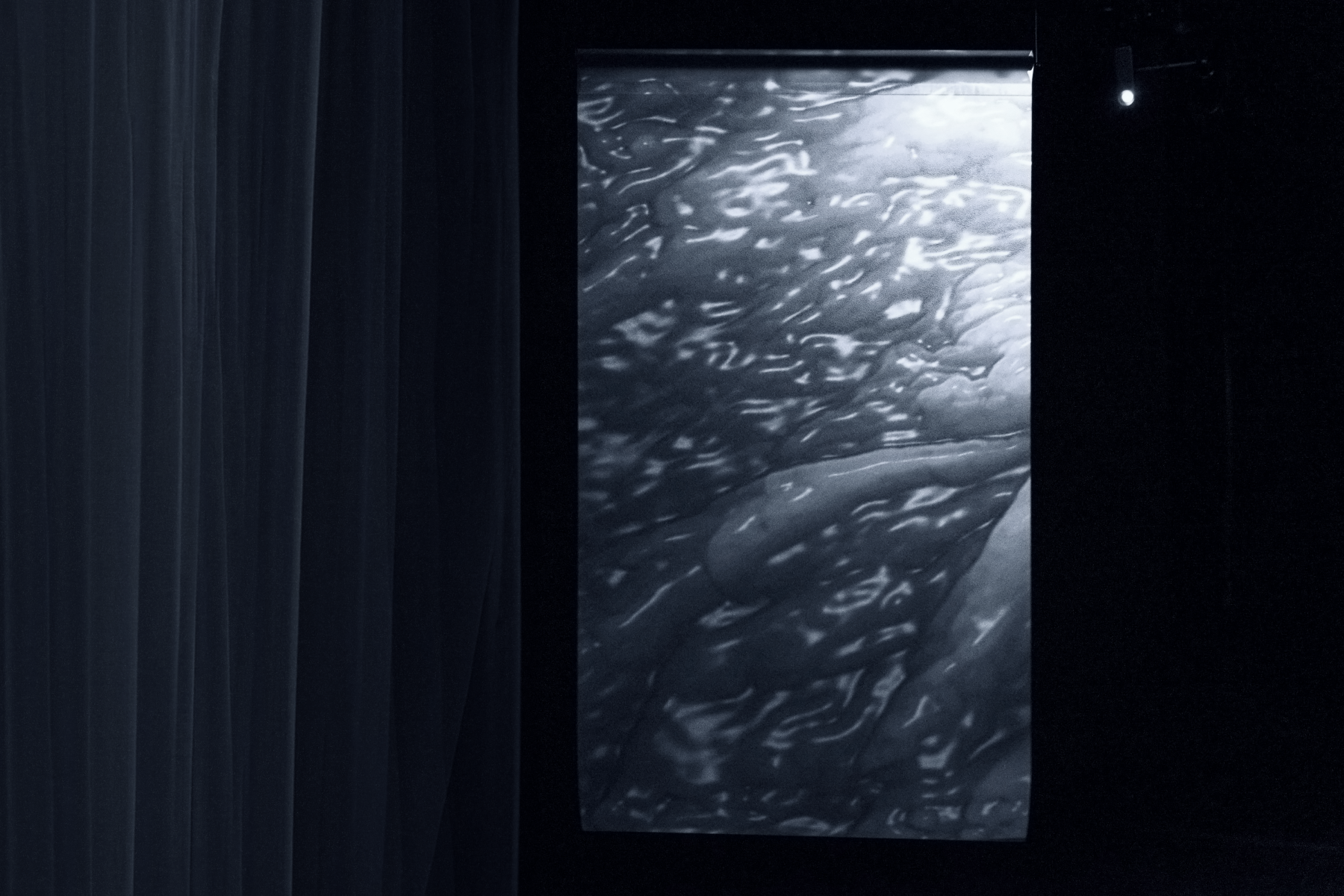

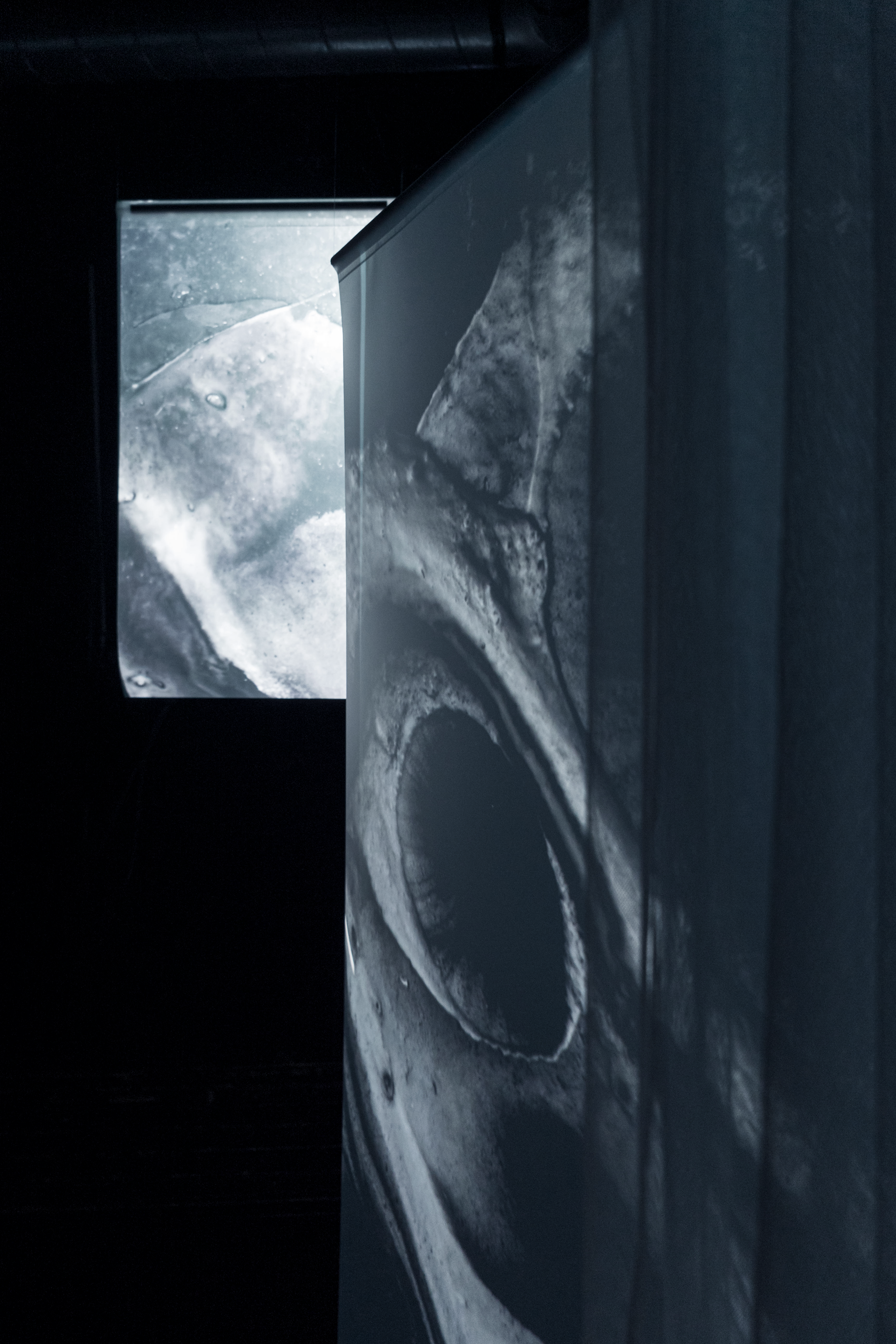
How is it possible to create a sense of touch through vision alone? How can this feeling be intensified to evoke an emotional response?
The master's project on synesthesia focuses on the connection between sight and touch, without excluding other senses. The result is an interactive, audiovisual spatial installation. The goal of the research on synesthesia is to create holistic sensory experiences ─ extending beyond the project itself.
From Bauhaus to Synaesthesia
The idea to explore synesthesia arose during my illustration studies through experiments with various media, inspired by Bauhaus principles. I experimented with different materials, such as ink combined with salt or detergent, to vividly represent textures.
As part of my master's thesis, I experimented with photogrammetry. I scanned objects in 3D, illustrated their surfaces with ink, and overlaid these illustrations onto the 3D objects to create stylized images. Ultimately, I decided to present the abstract ink textures as standalone motion pictures, allowing viewers to interpret them freely.
Mushrooms, with their diverse forms, became a central element of my work and provided a basis for my experiments.
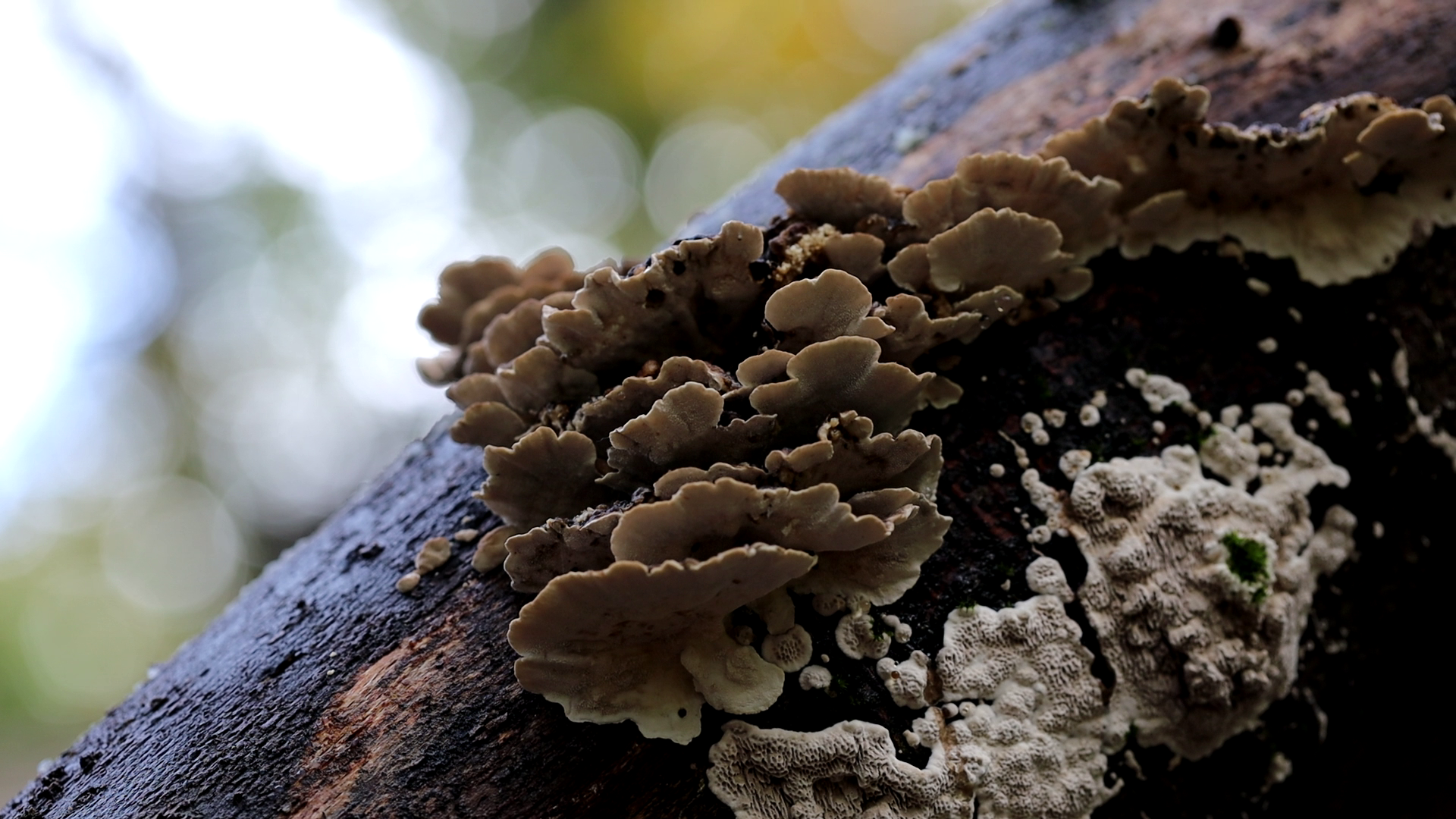



Interaction
The installation was designed to couple visual imagery with tactile objects. When something is touched within the box, projections in the room are triggered. The objects within the box encompass a variety of textures: soft, rough, or particularly structured. A social component is introduced through the two opposing entrances of the tactile box. This allows for interaction with another person, passing objects back and forth, or guiding them to specific areas. The tactile effect of touching the materials enhanced the sensory experience and reinforced the memory of the installation.

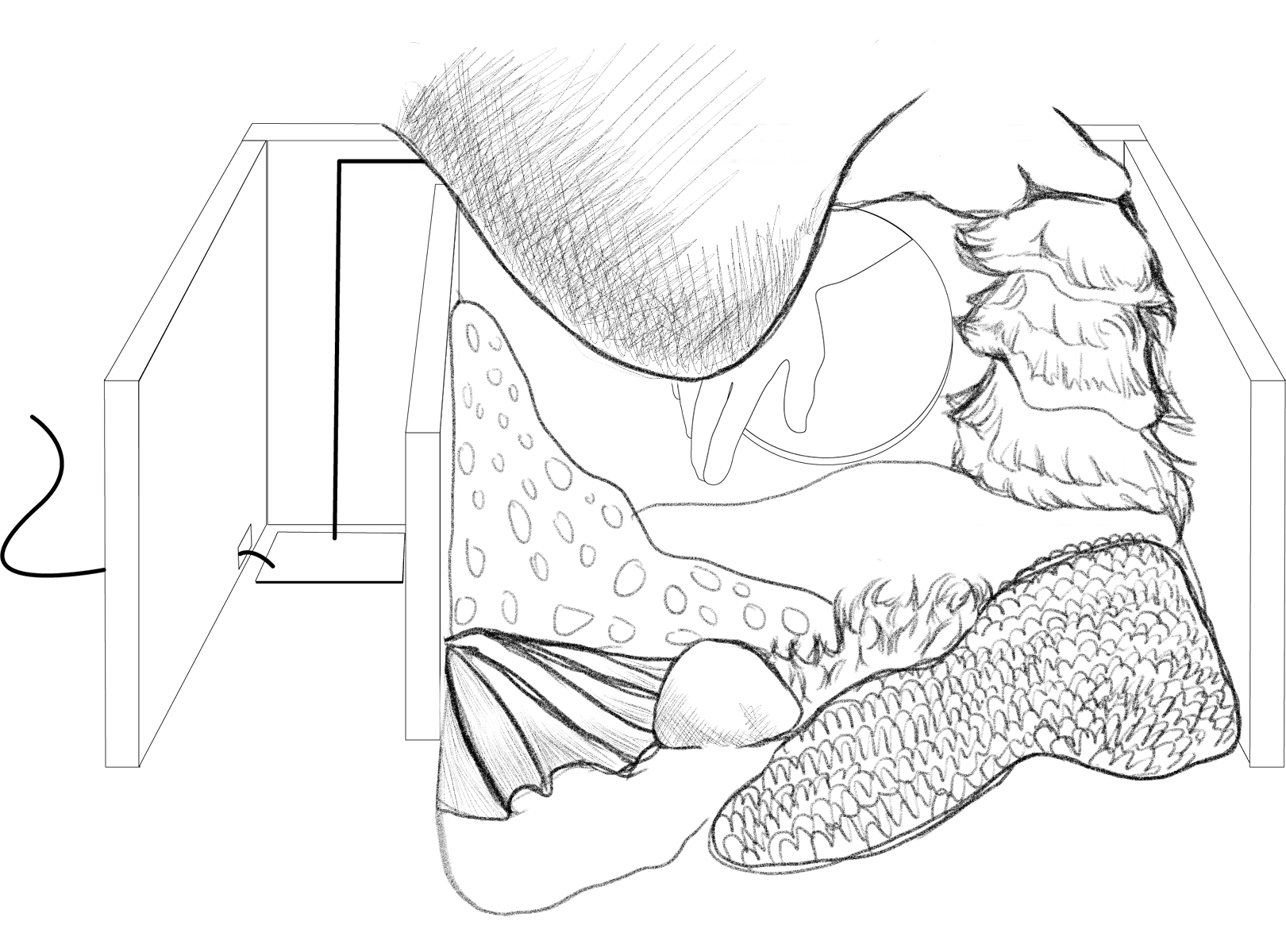
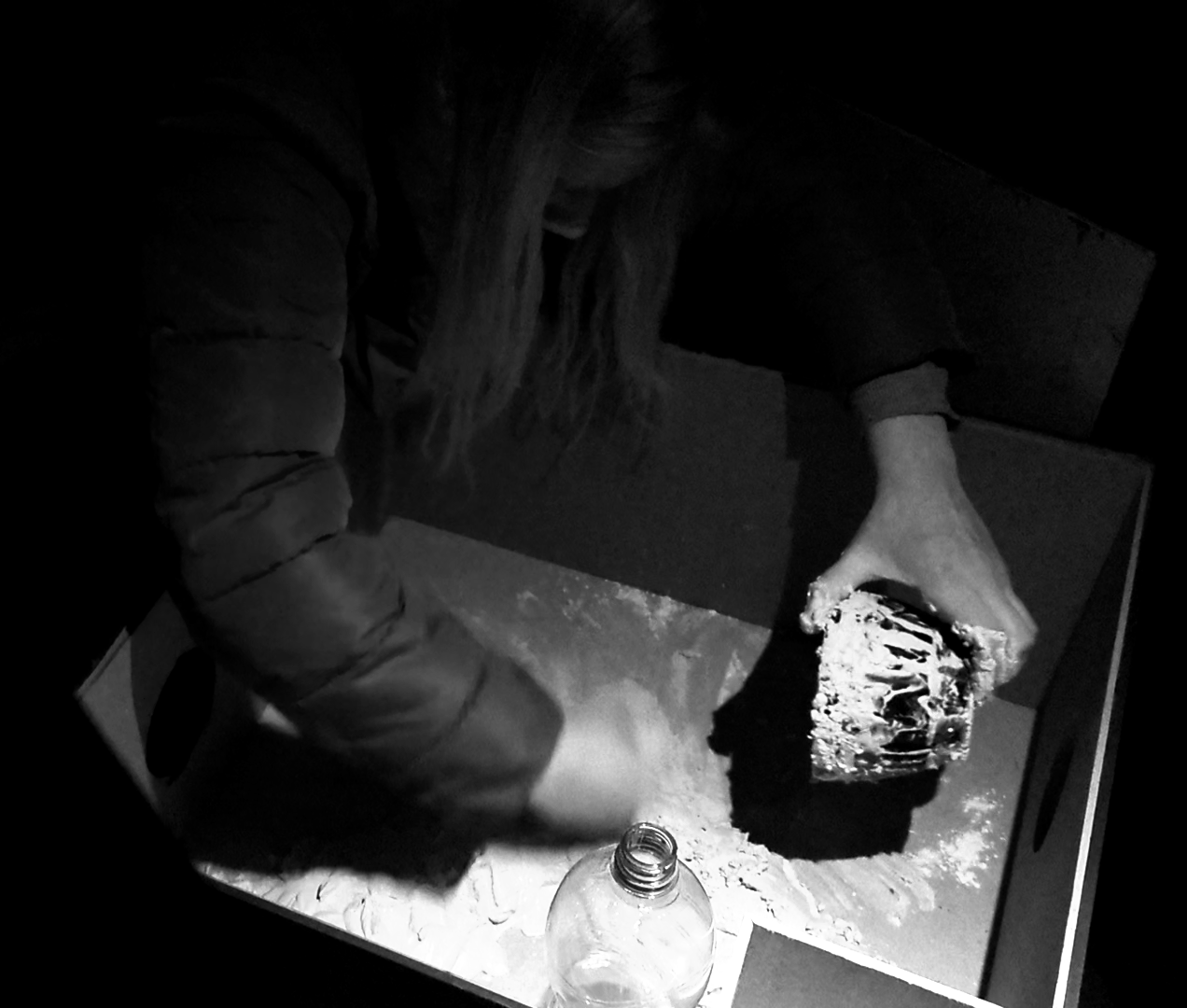
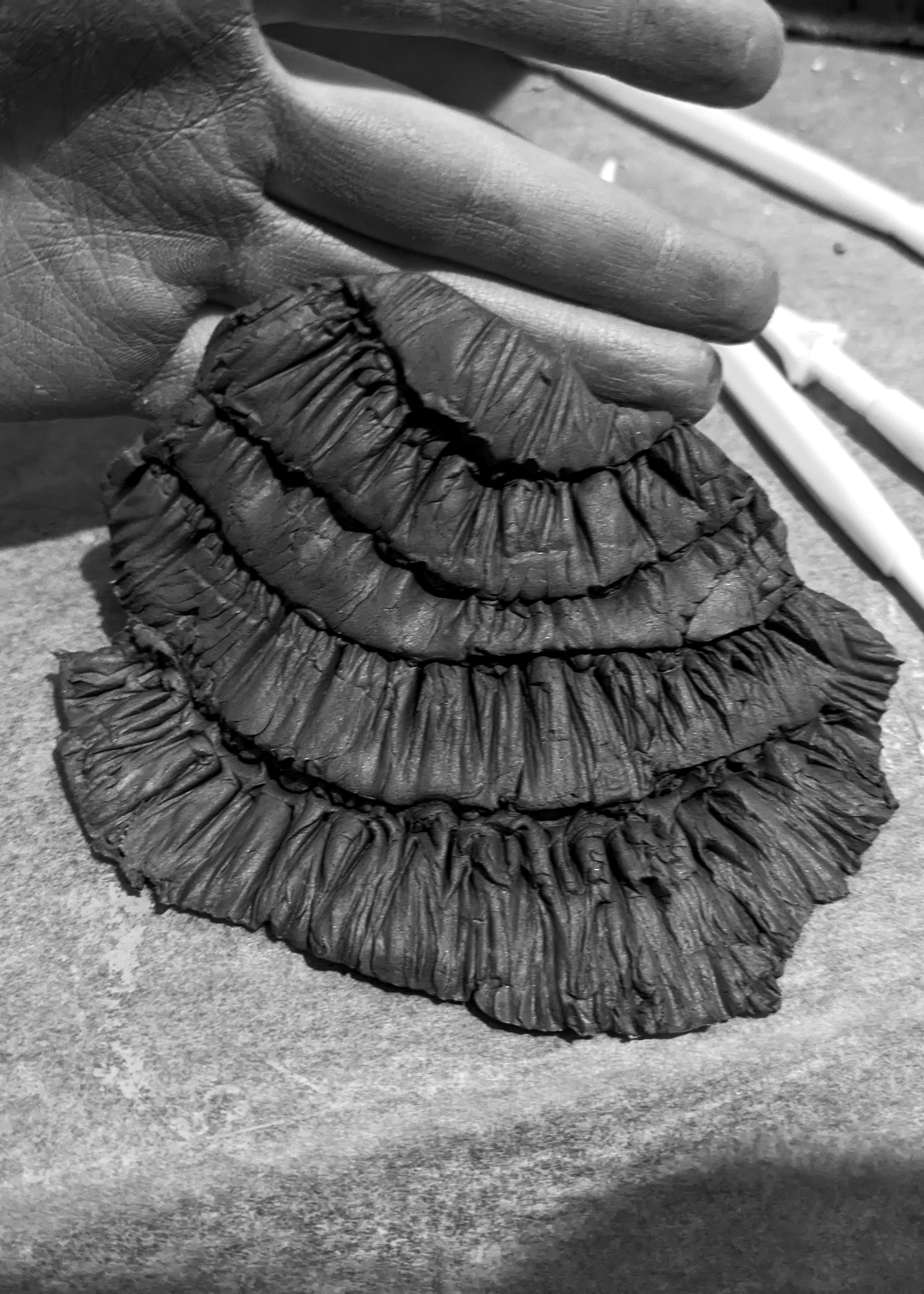
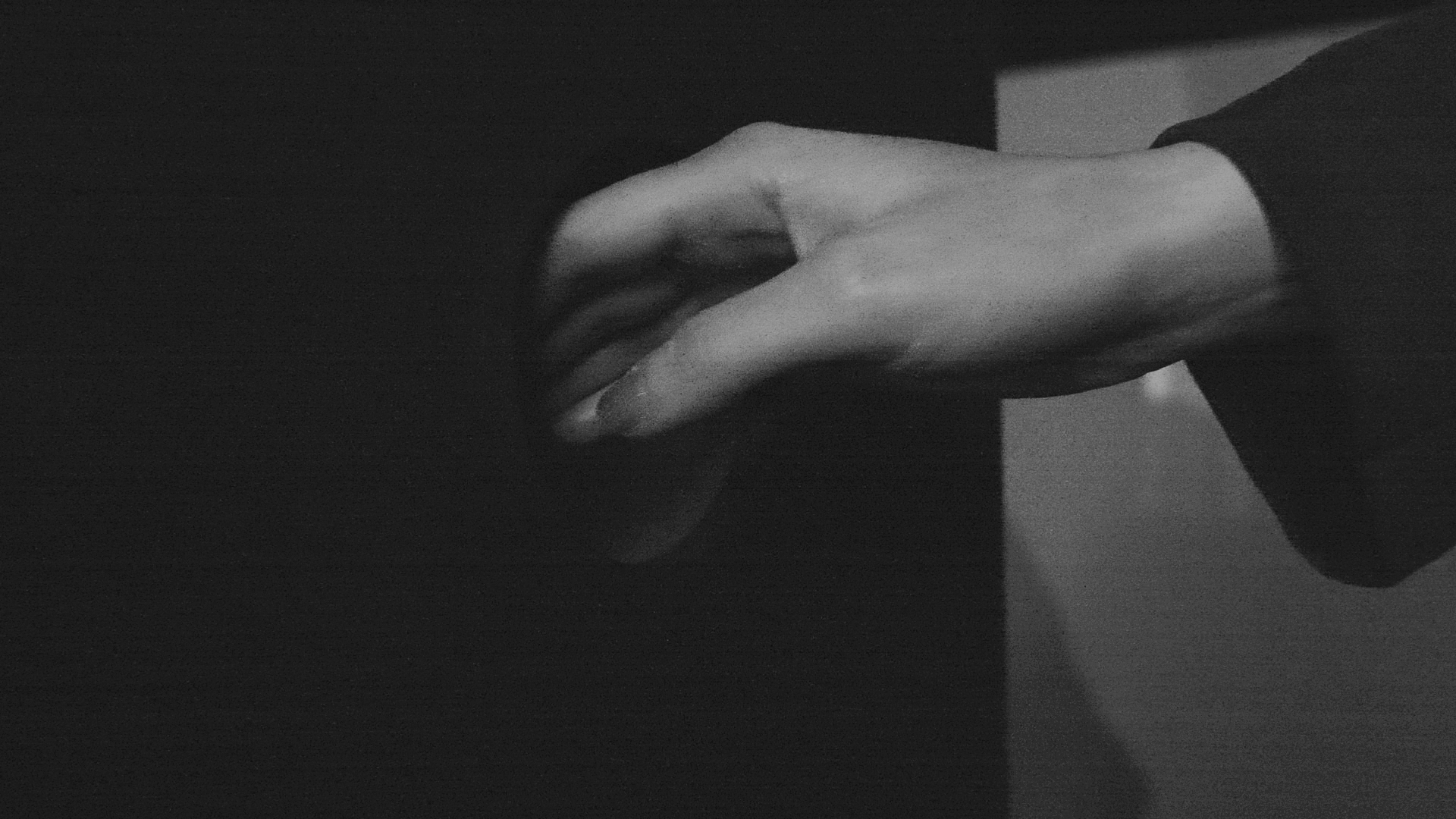
Space
For the immersive exhibition, it was important to me that the elements feel approachable and can be touched. Therefore, in addition to projection surfaces made of tear-resistant drawing foil, I hung fabric panels in the same manner. I selected the projection surfaces based on their tactile qualities. The hand-dyed fabric panels are meant to reflect the ink in the images, thus connecting the moving images with the space and enhancing the sensory experience. The fabric panels create a pathway through the room, allowing the rear projections to be viewed from all sides. Carpet was laid over the tiled floor to improve acoustics.
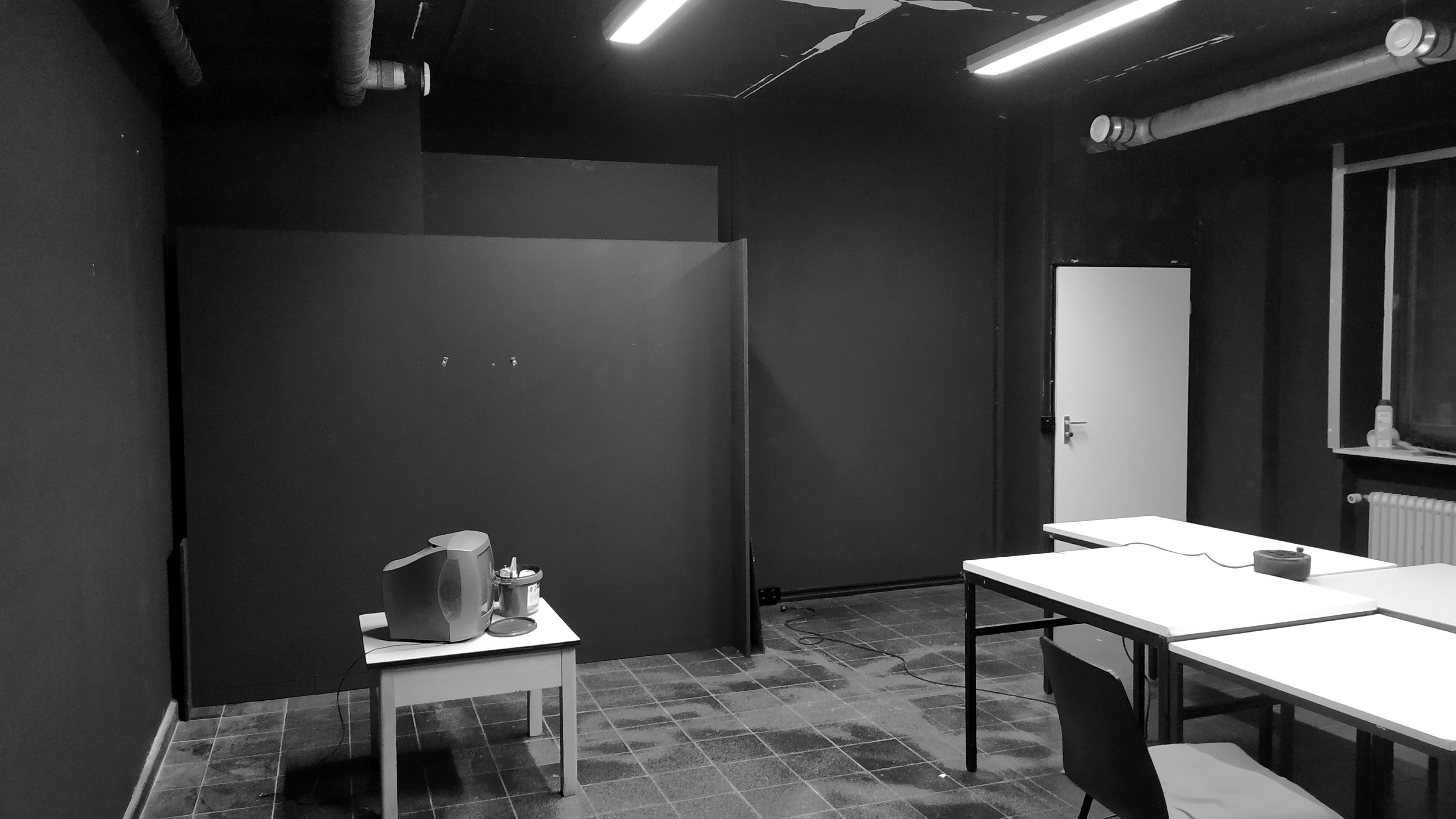
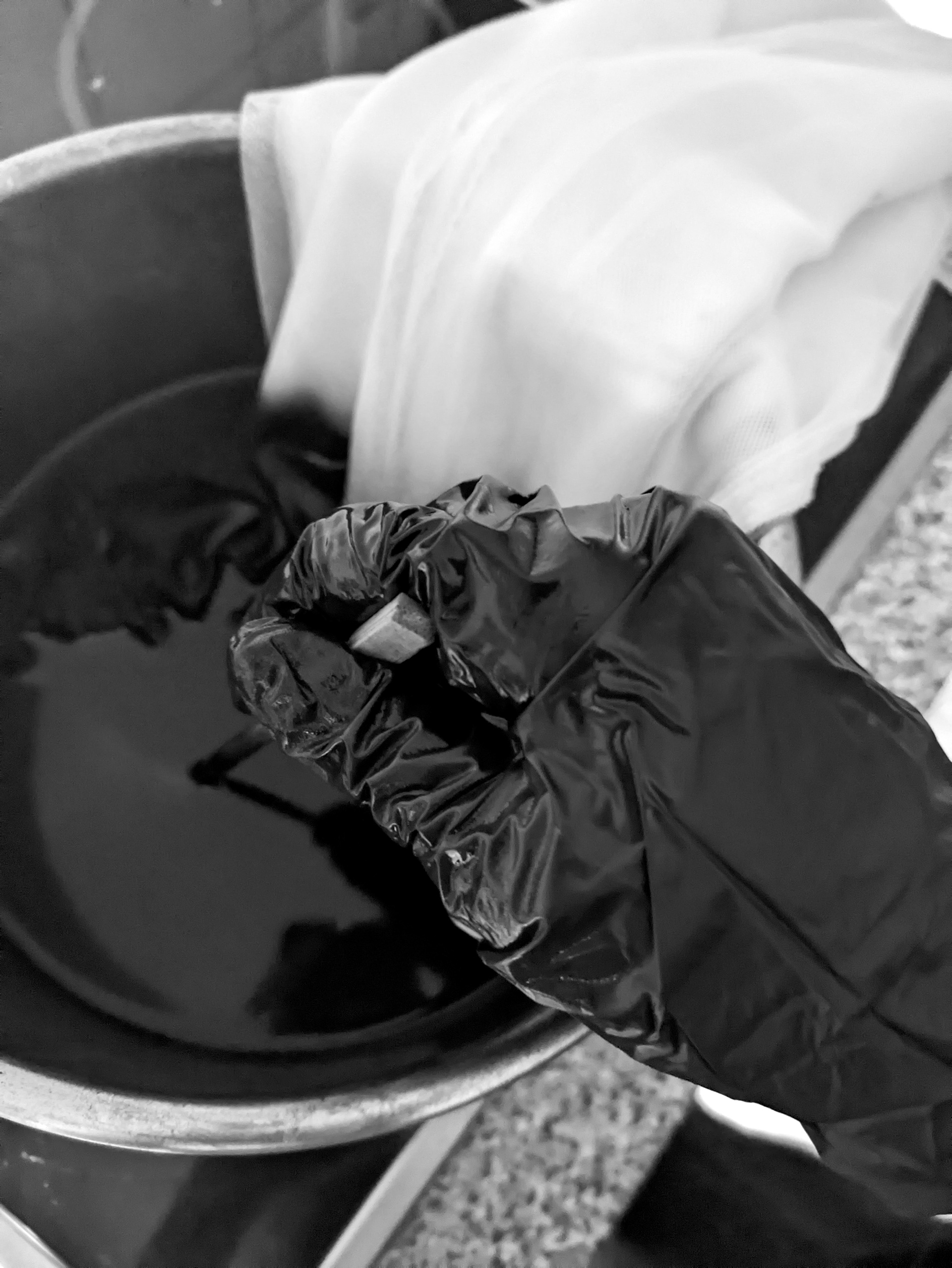

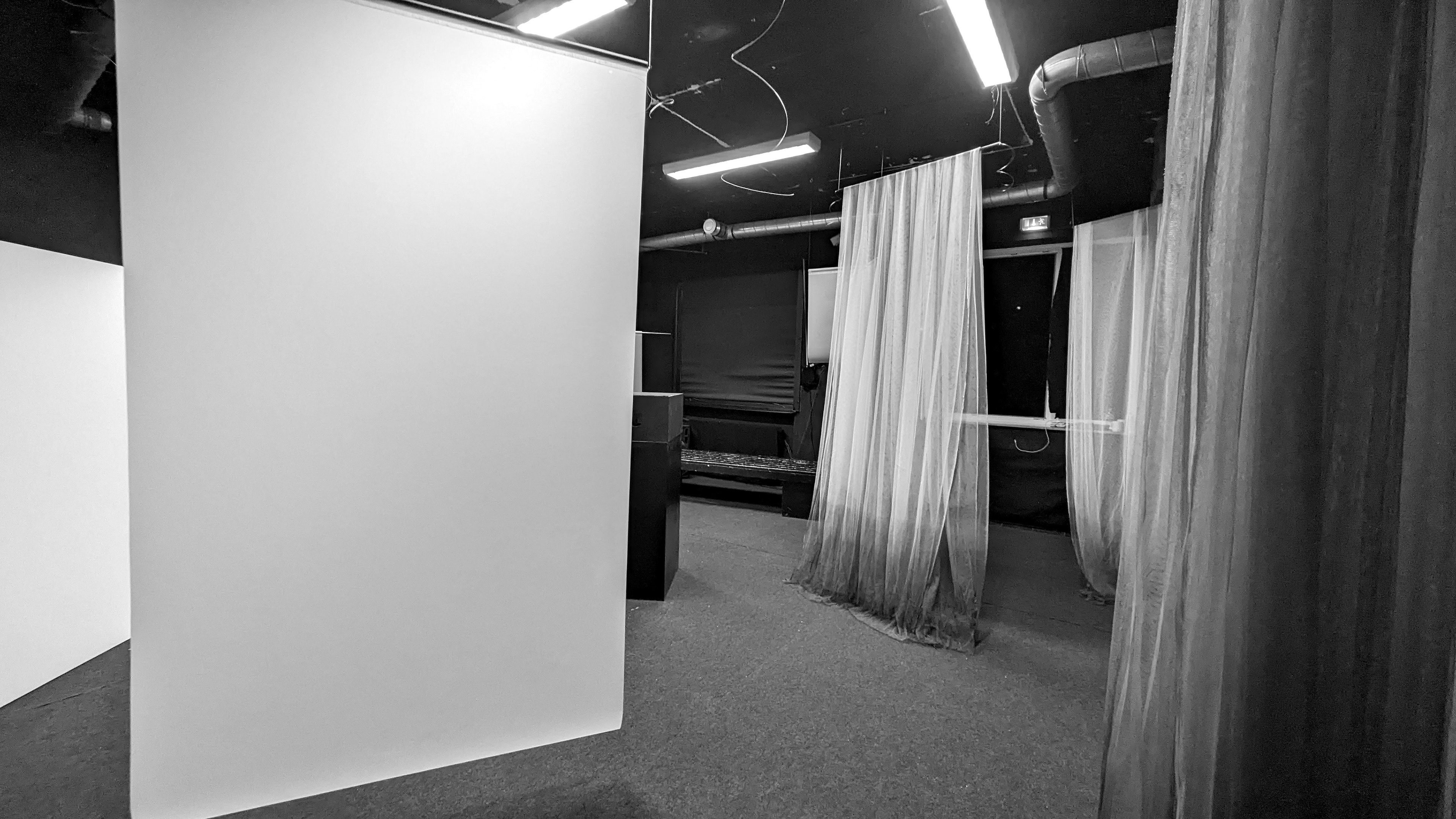
Facts
Location: University of applied Sciences and Arts, Bielefeld, Germany
Occasion: Masterproject Digital Media and Experiment
Projection: seven minutes
Technical specifications: six projectors, ca. 36 m² room size, ceiling hight ca. 3 m
Planning time: September 2023 –February 2024
Programs used: Blender, RealityCapture, MadMapper, Touchdesigner, Arduino
Exhibition: February 2024

